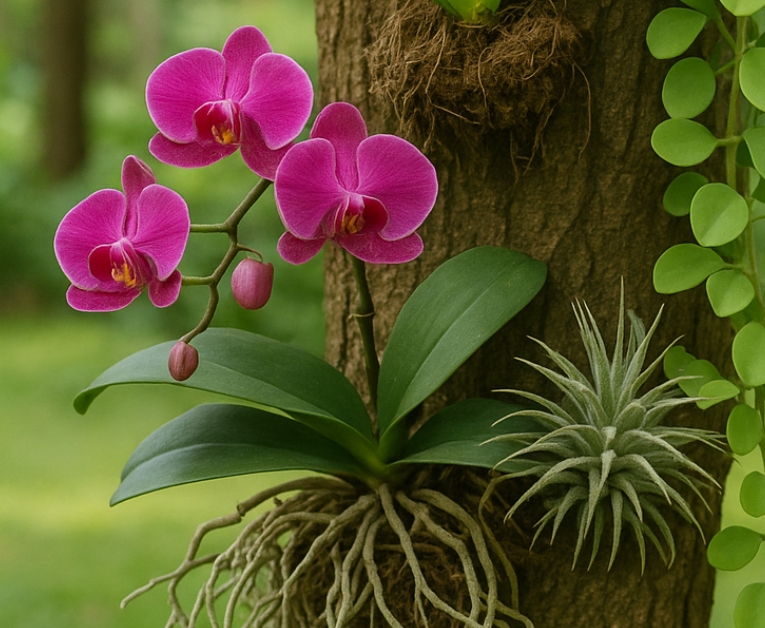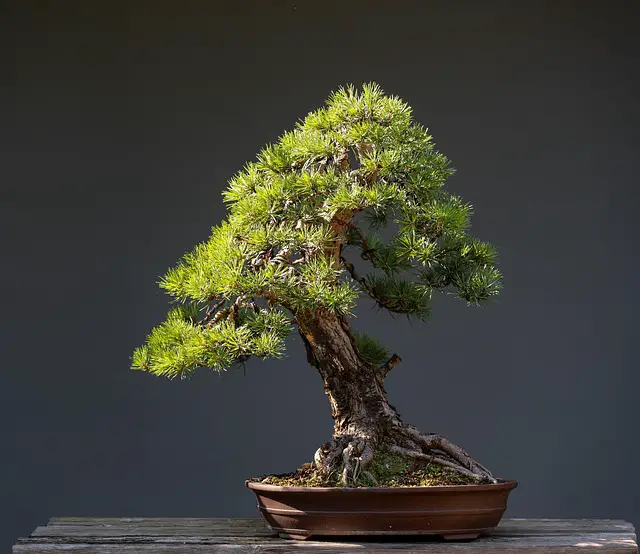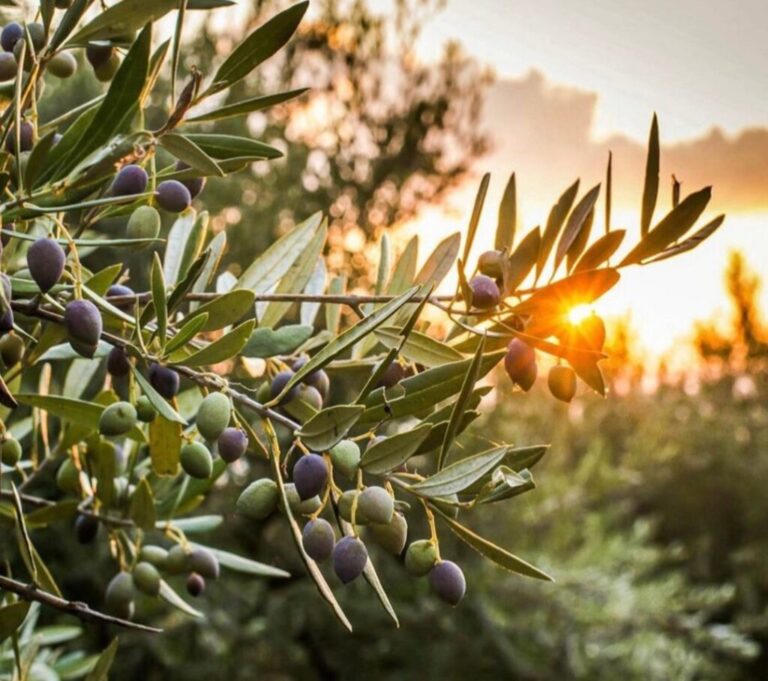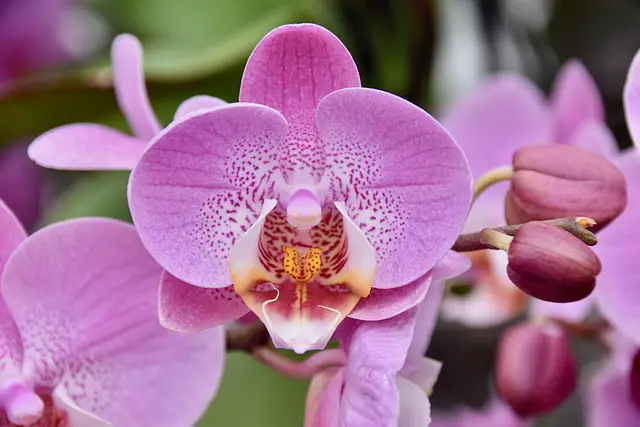If you’ve ever wandered through a tropical forest, you’ve likely seen plants growing high above the ground, clinging to tree trunks or branches. These are epiphytic plants, and they’ve adapted beautifully to thrive without soil by absorbing moisture and nutrients from the air, rain, and organic debris.
Epiphytes are not parasites—they coexist with trees and turn vertical spaces into living masterpieces. Ideal for both indoor and outdoor settings, they’re perfect for gardeners who want to save space while adding natural elegance to walls, tree limbs, or wooden mounts. In this guide, you’ll discover 20 of the best tree-dwelling epiphytic plants that bring beauty, biodiversity, and creativity into any home or garden environment.
- 1 What Are Epiphytic Plants?
- 2 20 Best Epiphytic Plants for Trees, Homes, and Gardens
- 3 1. Moth Orchid (Phalaenopsis)
- 4 2. Air Plant (Tillandsia
- 5 3. Elkhorn Fern (Platycerium bifurcatum)
- 6 4. Christmas Cactus (Schlumbergera)
- 7 5. Cattleya Orchid (Cattleya)
- 8 6. Spanish Moss (Tillandsia usneoides)
- 9 7. Queen of the Night (Epiphyllum oxypetalum)
- 10 8. Vriesea (Vriesea)
- 11 9. Dendrobium Orchid (Dendrobium)
- 12 10. Bromeliads (Various Species)
- 13 11. Bird’s Nest Fern (Asplenium nidus)
- 14 12. Orchid Cactus (Disocactus ackermannii)
- 15 13. Coelogyne Orchid (Coelogyne rochussenii)
- 16 14. Mistletoe (Viscum album)
- 17 15. Staghorn Fern (Platycerium spp.)
- 18 16. Guzmania (Guzmania spp.)
- 19 17. Aechmea (Aechmea fasciata)
- 20 18. Jungle Cactus (Rhipsalis spp.)
- 21 19. Anthurium (Anthurium andraeanum)
- 22 20. Lipstick Plant (Aeschynanthus radicans)
- 23 Where to Place Epiphytic Plants Indoors and Outdoors
What Are Epiphytic Plants?
Epiphytic plants grow on other plants or trees but are not parasitic. They attach themselves to bark, branches, or rocks and absorb moisture from rain, mist, or humidity. Their roots are primarily for anchoring, not for drawing nutrients from soil. Many orchids, ferns, and bromeliads belong to this fascinating group.
Benefits of Growing Epiphytic Plants
These plants bring the jungle indoors—without the mess of soil. They’re ideal for creative arrangements, reduce clutter, and purify the air naturally. Epiphytes require little space, are low-maintenance, and can be mounted creatively for a stylish, vertical gardening experience. They’re perfect for nature lovers living in apartments or small homes.
How to Grow Epiphytic Plants at Home
Mount epiphytic plants on tree bark, driftwood, or coconut husks using soft ties or glue. They thrive in humid environments with good airflow and bright, indirect light. Mist regularly or soak once a week, depending on the plant type. Avoid overwatering and ensure proper drying between watering sessions.
20 Best Epiphytic Plants for Trees, Homes, and Gardens
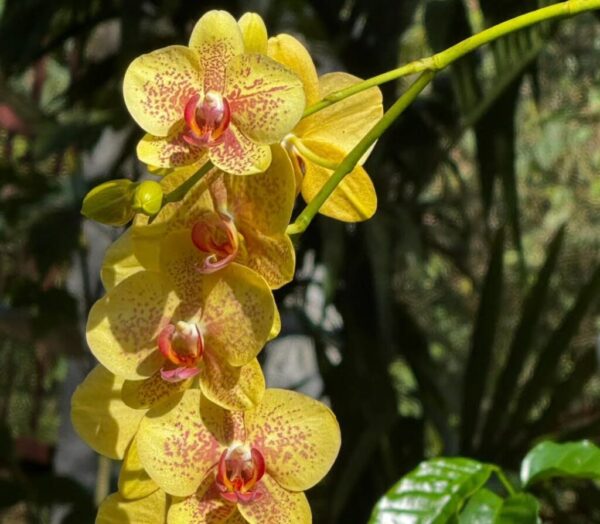
1. Moth Orchid (Phalaenopsis)
Moth orchids are elegant and beginner-friendly. They bloom in soft shades and thrive when mounted on bark or placed in orchid-specific media. They love bright, filtered light and high humidity. These beauties are common in households and are prized for their long-lasting, butterfly-like blooms.
2. Air Plant (Tillandsia
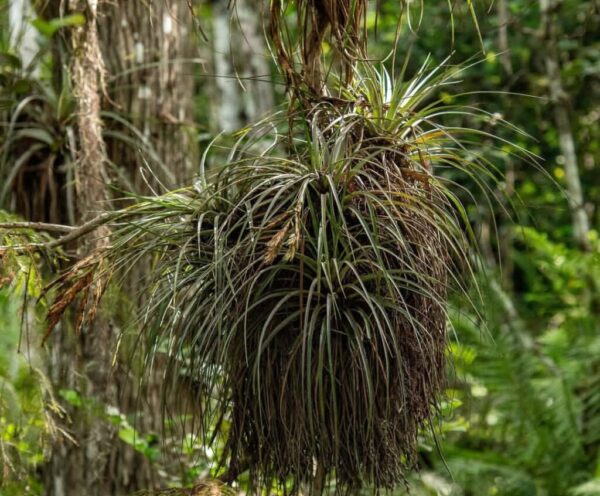
Air plants need no soil at all. Their specialized leaves absorb moisture and nutrients directly from the air. You can mount them on wood, shells, or display them in glass terrariums. Mist them a few times a week or soak them in water once weekly to keep them hydrated.
3. Elkhorn Fern (Platycerium bifurcatum)

Elkhorn ferns look like antlers and grow beautifully on wooden boards or tree trunks. They have flat, shield-like basal fronds and upward-growing fertile fronds. These ferns love bright but indirect light and high humidity. Keep them slightly moist and watch them transform any vertical space into a green oasis.
4. Christmas Cactus (Schlumbergera)
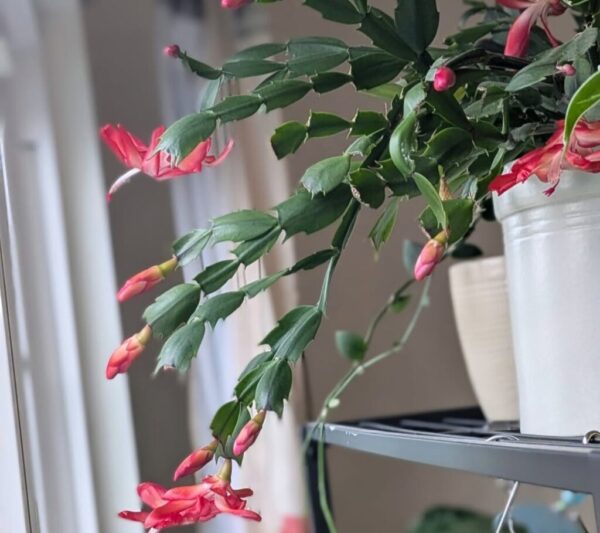
Unlike desert cacti, this tropical cactus thrives in moist environments. It clings to trees in Brazilian rainforests and produces vibrant blooms during winter. It favours soil that is somewhat damp and indirect light.With proper care, it can bloom annually and live for decades, often being passed down through generations.
5. Cattleya Orchid (Cattleya)
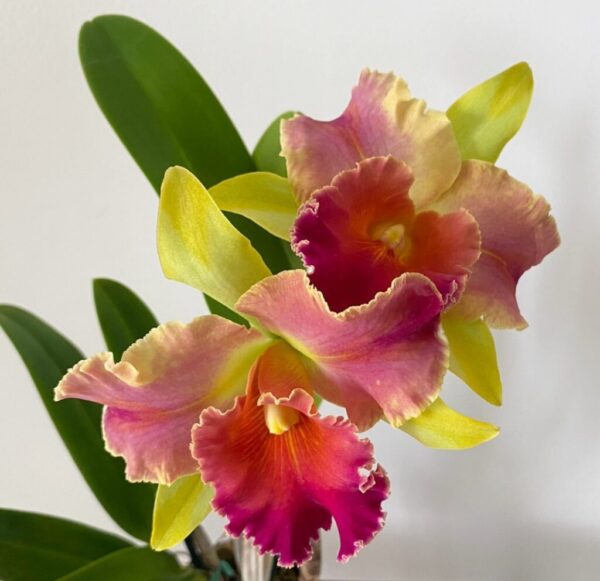
Known as the “Queen of Orchids,” Cattleyas produce large, fragrant flowers. Their thick pseudobulbs and aerial roots make them perfect for mounting on bark. They need bright light, occasional soaking, and good airflow. These orchids are ideal for sunny windows or humid outdoor setups in tropical climates.
6. Spanish Moss (Tillandsia usneoides)
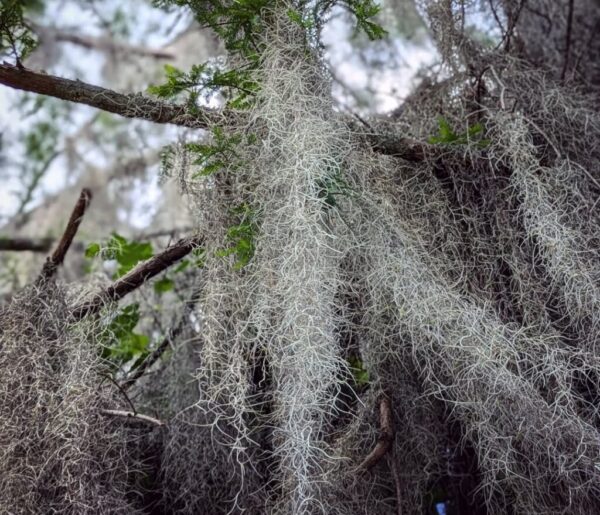
Trees gain an enigmatic charm from this graceful, draped epiphyte. With minimal maintenance, Spanish moss dangles from branches like silver threads. Bright, indirect light and humidity are ideal for its growth. Once or twice a week is sufficient for misting or soaking. Wedding décor and southern landscapes frequently employ it.
7. Queen of the Night (Epiphyllum oxypetalum)
Queen of the Night is an uncommon night-blooming cactus that grows epiphytically in tropical woodlands. Large, fragrant white blooms that bloom for only one night are produced by this plant. It enjoys the occasional watering and grows best in bright, indirect light. The plant is ideal for hanging baskets or tree attachments because of its trailing stems.
8. Vriesea (Vriesea)
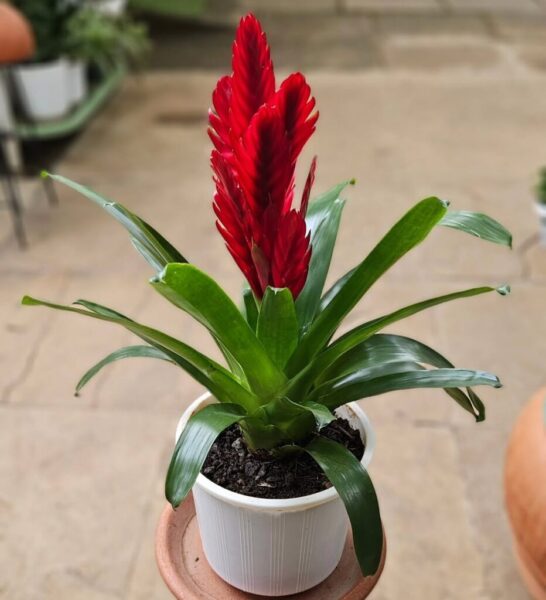
Vriesea bromeliads are prized for their rosette-forming leaves and colourful flower spikes. Rainwater is collected by these plants’ leaf cups as they grow on trees. They need warm weather, moderate humidity, and filtered light. For optimal effects, mist the leaves frequently and keep clean water in the centre cup.
9. Dendrobium Orchid (Dendrobium)
Dendrobiums are adaptable and diverse orchids that often grow on tree bark. They produce multiple flowers on tall canes and can thrive indoors or outdoors. These orchids prefer bright light, moderate watering, and good airflow. They’re a favorite among collectors and bloom reliably when cared for properly.
10. Bromeliads (Various Species)
Bromeliads are colorful, easy-to-grow epiphytes. Their funnel-shaped leaf rosettes collect water and organic debris. You can mount them on bark or display them in pots with bark mix. They favour warm humidity, sporadic watering, and indirect light. Many species, like Guzmania and Aechmea, offer long-lasting blooms.
11. Bird’s Nest Fern (Asplenium nidus)
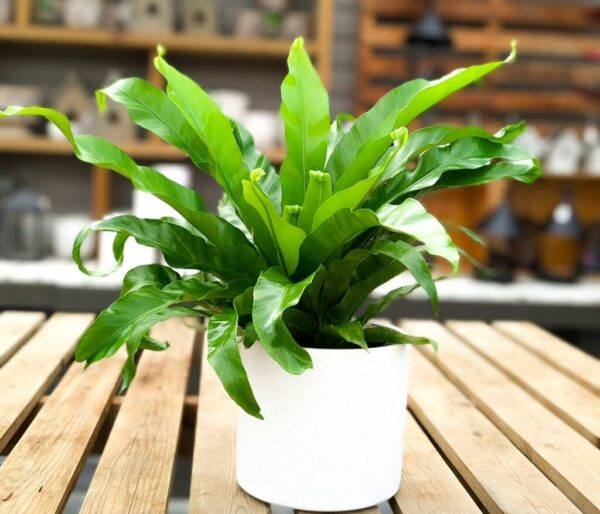
Bird’s nest ferns grow in tree crevices, where their fronds form a nest-like rosette that catches organic material. They love filtered light, consistent moisture, and high humidity. Their lush, wavy leaves add a tropical vibe to any room or garden, especially when mounted on wood or tree trunks.
12. Orchid Cactus (Disocactus ackermannii)
This epiphytic cactus has flat, trailing stems and stunning red or pink flowers. It grows well when placed in hanging baskets or mounted on bark. It needs bright, indirect light and occasional watering. It thrives in warm, humid environments, making it a perfect addition to tropical-style gardens.
13. Coelogyne Orchid (Coelogyne rochussenii)
This lesser-known epiphytic orchid features cascading flower spikes and leathery green leaves. Native to Southeast Asia, it grows well on tree trunks or bark slabs. It requires filtered light, high humidity, and frequent misting. With patience, it rewards growers with clusters of fragrant white and yellow flowers.
14. Mistletoe (Viscum album)
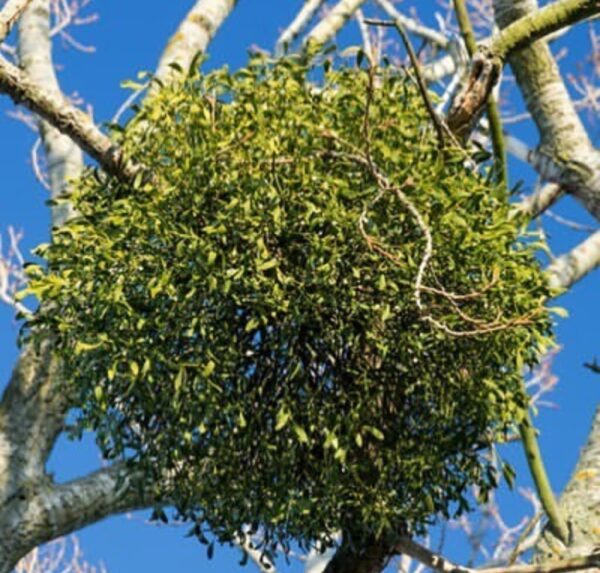
Mistletoe is a semi-parasitic epiphyte that attaches to tree branches and draws some nutrients from its host. It’s known for its festive significance and white berries. While not grown commonly indoors, it is fascinating in outdoor ecosystems, offering food and shelter to birds and insects.
15. Staghorn Fern (Platycerium spp.)
Staghorn ferns have dramatic antler-like fronds and a flat basal shield that secures them to trees. They are often mounted on wooden plaques and hung on walls. These ferns require moderate watering, indirect light, and good humidity. They make excellent living wall displays for homes and patios.
16. Guzmania (Guzmania spp.)
Guzmanias are tropical bromeliads with colorful central bracts that last for months. They grow epiphytically in rainforests and thrive when mounted or potted in bark-based mixes. They love humidity, soft light, and having their central cup filled with water. They’re low-maintenance and great for brightening indoor spaces.
17. Aechmea (Aechmea fasciata)
Also called the Urn Plant, Aechmea features silvery foliage and pink, long-lasting flower spikes. It grows well as an epiphyte on trees or mounted on wooden supports. Keep the central cup filled with water and mist the leaves regularly. Aechmea is both decorative and drought-tolerant once established.
18. Jungle Cactus (Rhipsalis spp.)
Rhipsalis, also called mistletoe cactus, grows in hanging clumps from trees in rainforests. It prefers dappled light, consistent humidity, and well-drained mounting or potting. Its wiry, pendant stems make it an excellent choice for hanging baskets. With enough moisture, it produces small white or yellowish blooms.
19. Anthurium (Anthurium andraeanum)
While often potted, many Anthurium species naturally grow on trees in tropical forests. They have glossy heart-shaped leaves and long-lasting flowers. When mounted on bark or placed in airy media, they perform well indoors with indirect light and regular misting. Anthuriums add elegance and tropical flair to interiors.
20. Lipstick Plant (Aeschynanthus radicans)
The Lipstick Plant gets its name from its bright red tubular flowers that peek out of dark calyxes. Native to the tropics of Asia, it’s an epiphyte that grows in tree hollows. It thrives in hanging baskets with indirect light, warm temperatures, and moist but well-drained growing media.
Where to Place Epiphytic Plants Indoors and Outdoors
Epiphytic plants can be placed in tree crotches, mounted on driftwood, or displayed in hanging planters. Indoors, mount them near east-facing windows or under skylights. Outdoors, use trees with rough bark like mango, guava, or jackfruit. Ensure they’re protected from harsh sun and get enough humidity.
Epiphytic plants bring beauty, creativity, and vertical greenery into your space—without the mess of traditional soil gardening. From orchids to air plants, they offer variety and charm. Whether you’re mounting them indoors or outdoors, these 20 species will add an exotic, low-maintenance touch to your home or garden.
